45 is potassium required on nutrition labels
The Basics of the Nutrition Facts Label - Academy of Nutrition and ... 04.03.2022 · You know about calories, but it also is important to know about the additional nutrients on the Nutrition Facts label. Protein: A percentage Daily Value for protein is not required on the label. Eat moderate portions of lean meat, poultry, fish, eggs, low-fat milk, yogurt and cheese, plus beans and peas, nuts, seeds and soy products. 2020 Nutrition Label Guidelines: What you Need to Know to Stay ... Nutrition labels are a critical component of packaging for food products, and these guidelines must not be ignored. ... required ingredients like calcium, iron, potassium, and sodium must now include the updated daily values. The daily value for sodium has decreased from 2,400 mg per day to 2,300 mg. ... Updated Serving Sizes and Labeling ...
Reading and understanding the Nutrition Facts Label for health Nutrition Facts Labels include nutrients we should limit such as fat, saturated fat, trans fats, cholesterol, sodium and added sugar. They also list nutrients important to include in a healthy diet including dietary fiber, vitamin D and minerals such as calcium, potassium and iron. The old label required vitamin A and C to be included which are ...
Is potassium required on nutrition labels
Food Label Claims: What You Can and Can't Trust - WebMD The healthy claim also can be used on products that have at least 10% of the Daily Value of potassium and vitamin D. Natural. This word has no official definition, so it can be misleading. Natural... PDF Nutrition Labeling - Questions and Answers - Food Safety and Inspection ... No, under the 1993 nutrition labeling regulations that established the mandatory and voluntary nutrition labeling programs, in order for the term "__percent lean" to be used on the label or in labeling of the product, the product must have met the criteria for "low fat" (9 CFR 317.362(b)(6) and 381.462(b)(6)). Most ground beef and Labeling Potassium | Labeling & Compliance | ESHA Research Currently, potassium is a voluntary label nutrient, and need only be listed on the Nutrition Facts label if a claim is made about it on the product package. If the proposed change passes, food companies will be required to report the potassium content per serving in most of their products. So, why the new interest in potassium?
Is potassium required on nutrition labels. How to Read the New Food Label - The Johns Hopkins Patient Guide to ... Vitamin D, calcium, iron, and potassium are the vitamins/minerals that are required on the new food label. Vitamins A and C are no longer required because the risk of deficiency is low. Higher amounts of potassium can be beneficial to help lower blood pressure. People with kidney disease may need to monitor or decrease potassium. Daily Value on the New Nutrition and Supplement Facts Labels Feb 25, 2022 · See below for a side-by-side comparison of the information on the original and new Nutrition Facts labels. (If product serving size and amount of nutrient stayed the same) For the nutrients with ... How to Understand and Use the Nutrition Facts Label | FDA Feb 25, 2022 · Many Nutrition Facts labels on the market will be formatted in the same way as the lasagna label that has been used as an example throughout this page, but there are other formats of the label ... Potassium - Health Professional Fact Sheet - National Institutes of Health The DV for potassium is 4,700 mg for adults and children age 4 years and older [ 17 ]. FDA requires the new food labels to list potassium content. Foods providing 20% or more of the DV are considered to be high sources of a nutrient, but foods providing lower percentages of the DV also contribute to a healthful diet.
FDA Overhauls Nutrition Facts Label - IFT.org In addition to the % DV, the actual quantities of vitamin D and potassium will be required on the label (FDA 2016b; HHS/USDA 2016). The % DV for vitamin D and potassium is based on the Reference Daily Intake (RDI) of 20 mcg and 4,700 mg, respectively (FDA 2016b). ... Food labeling: Revision of the Nutrition and Supplement Facts labels. Understanding Food Nutrition Labels - American Heart Association When choosing among different brands or similar products, compare labels and choose foods with less of these nutrients when possible.. 4 - Get enough of the beneficial nutrients. Make sure you get enough of the nutrients your body needs, such as: calcium, choline, dietary fiber, iron, magnesium, potassium, and vitamins A, C, D and E.* PDF Food Labels and Potassium - American Kidney Fund Potassium is not always listed on food labels, so be sure to check the ingredient list. CaloriesCheck here to find out how many calories are in one serving of the food or drink. If you eat two servings of a food, you are having twice as many calories. Tracking your calories can help you keep a healthy weight. How to Read a Food Label Understanding Food Labels | The Nutrition Source | Harvard T.H. All FOP labels in the U.S. are voluntary, which allows food manufacturers to highlight or hide the nutrition information they choose to help promote or preserve sales. If warning labels became mandatory, as public health advocates propose, the pressure on manufacturers would increase to change certain products to improve their nutritional quality.
Potassium Fact Sheet - Food Insight However, in order to draw more attention to potassium's significant contributions to health as well as its current insufficient intake, potassium is now a required component of the recently updated Nutrition Facts label.¹⁷ It is important to note that the % DV listed for potassium on Nutrition Facts labels is still calculated using the ... What vitamins are required on the nutrition label? While calcium and iron will still be needed on Nutrition Facts labels, the public health nutrients will be stated in the following order: Vitamin D, calcium, iron, and potassium, along with the actual gram amount and percent DV. Get to know the new Nutrition Facts label - Mayo Clinic In some cases, you may find a nutrition label with two columns: One column will display daily values for the recommended serving (like eight chips), and the other will display daily values for the entire bag of chips. ... Vitamin D, potassium, calcium and iron are required on the new label. Vitamin D and potassium are new additions, because ... Your Guide to the New Food Label | National Kidney Foundation Potassium and phosphorus may be listed as percent daily values, but it is not required. (Starting in 2018, manufacturers will be required to list potassium.) If potassium and phosphorus are not listed, it does not mean that they are not in that food.
Nutrition Labels 101: What's Required? What's Optional? Vitamins A and C will no longer be required on the FDA's Nutrition Facts labels (though manufacturers may still include them if they choose), while Vitamin D and Potassium will now be required. The percent of the daily value is expressed in 2% increments from 2-10% of the daily value; in 5% increments from 10 to 50% of the daily value; and in ...
Potassium and the Nutrition Facts Label This is because, as of now, food manufacturers aren't required to include potassium on their labels - unless a product is making a specific, potassium-related health claim. In the United States, this has the potential to change in the coming months.
12 Potassium Rich Foods You Can Enjoy On Keto Aug 17, 2019 · Low levels of potassium have been connected with high blood pressure, heart disease and stroke. According to the National Health and Nutrition Examination Survey (NHANES), a diet high in potassium from whole food sources may lower blood pressure by lessening the effect of sodium, which can raise blood pressure in high concentrations[*].
Food Labels and Potassium - Kidney Diet Tips Listing potassium on food labels is optional for food manufacturers. Dialysis patients be aware that just because potassium is not listed on the label, it does not mean the food is potassium free. Potassium is plentiful in milk, meats, fruits, vegetables, beans and nuts. If these ingredients are in the food, it contains potassium.
Food Labels | CDC - Centers for Disease Control and Prevention All the numbers on this label are for a 2/3-cup serving. This package has 8 servings. If you eat the whole thing, you are eating 8 times the amount of calories, carbs, fat, etc., shown on the label. Total Carbohydrate shows you types of carbs in the food, including sugar and fiber. Choose foods with more fiber, vitamins, and minerals.
Nutrition Facts table formats - Food labels - Canadian Food … The Nutrition Facts table is not required to occupy more than 15% of the available display surface (ADS) of a package, except in the case of smaller packages. For information on calculating the ADS of the package, see the Available display surface page. When calculating the space occupied by the Nutrition Facts table, remember the following 3 ...
Nutrition Facts Labeling — FDA Reader The requirements for nutrition labels may vary depending on: Food package size. Claims made about the product, its ingredients, and health benefits ... "Added Sugars" are now required to be included on the label. Listings of Vitamin D and Potassium are required. Actual amounts must be present for Vitamin D, Calcium, Iron, Postassium,
According to nutrition labeling laws what two vitamins must be listed? Vitamin D, calcium, iron, and potassium are the four vitamins and minerals that must be stated on every revised Nutrition Facts label. While calcium and iron were previously essential, vitamin D and potassium have now been added to the list, replacing vitamins A and C. On a food label, which of these is required?
New Nutrition Label Requirements for Packaged Food in 2021 The U.S. Food and Drug Administration announced the new requirements for food labels in September 2019, which should provide consumers with more relevant information. Most companies initially updated their nutrition labels back in 2016. ... it has now become compulsory to add vitamin D and potassium content on the nutrition label. Insufficient ...
Changes to the Nutrition Facts Label | FDA - U.S. Food and Drug ... Vitamin D and potassium are required on the label. Calcium and iron will continue to be required. Vitamins A and C are no longer required but can be included on a voluntary basis.
Food labeling: MedlinePlus Medical Encyclopedia Food labels are called "Nutrition Facts." The United States Food and Drug Administration (FDA) has updated the Nutrition Facts label, ... Vitamin D, calcium, iron, and potassium are the only micronutrients required to be on the food label. Food companies can voluntarily list other vitamins and minerals in the food.
How to Understand Nutrition Labels - Insider The bottom of the new nutrition label is dedicated to nutrients that most people are deficient in. These include iron, calcium, vitamin D, and potassium. Ansel says that although potassium should be in the spotlight, it often takes a backseat to nutrients like sodium.
The Importance of Food Labels | Requirements for Packaging Sep 07, 2018 · Nutrition/Dietary Advice. Since 2016, it has been a legal requirement for food production companies to display nutritional information on the back of all pre-packaged food. As well as ensure you fulfil your legal responsibilities, nutritional information can help consumers to lead healthier, longer lives.
Why do food nutrition labels seldom include potassium? - Quora The U.S. Food and Drug Administration (FDA) does not require potassium to be listed; it's optional. In a Reuters interview with the FDA in 2013: "The declaration of potassium is only mandatory when a nutrient/content or health claim about potassium is being made" "The FDA is currently undergoing rulemaking to update the Nutrition Facts label."
How Do You Know Your Food's Nutrition Facts Label Is Accurate? NIST's measurements are accurate to within 2% to 5% for nutrient elements (such as sodium, calcium and potassium), macronutrients (fats, proteins and carbohydrates), amino acids and fatty acids. As you may have noticed, most of your favorite food items have recently updated their nutrition facts labels.
Food labels often missing potassium content | Reuters The U.S. Food and Drug Administration (FDA) currently requires sodium to be listed on nutrition facts, but potassium labeling is optional. "The declaration of potassium is only mandatory when a...
Understanding Ingredients on Food Labels | American Heart … 06.03.2017 · Food labels are an important source of information about calories and the nutritional value of the foods you eat, a crucial tool in building a heart-healthy diet. The Nutrition Facts information is always displayed in the same orderly fashion and helps you understand how much of certain nutrients that you need to limit are contained in the product per serving.
Learn How the Nutrition Facts Label Can Help You Improve Your Health Nutrients Required on Label Vitamin D and potassium values are required. Calcium and iron will continue to be required. Vitamins A and C will no longer be required but can be included on a voluntary basis. Slight Decrease in Sodium Allowance The daily limit for sodium decreased slightly from 2,400 mg per day to 2,300 mg per day.
How to Read a Nutrition Facts Label | Everyday Health New nutrients Labels are now required to show vitamin D and potassium content (vitamins A and C are no longer required, likely because they are no longer considered "nutrients of concern," says...
Labeling Potassium | Labeling & Compliance | ESHA Research Currently, potassium is a voluntary label nutrient, and need only be listed on the Nutrition Facts label if a claim is made about it on the product package. If the proposed change passes, food companies will be required to report the potassium content per serving in most of their products. So, why the new interest in potassium?
PDF Nutrition Labeling - Questions and Answers - Food Safety and Inspection ... No, under the 1993 nutrition labeling regulations that established the mandatory and voluntary nutrition labeling programs, in order for the term "__percent lean" to be used on the label or in labeling of the product, the product must have met the criteria for "low fat" (9 CFR 317.362(b)(6) and 381.462(b)(6)). Most ground beef and
Food Label Claims: What You Can and Can't Trust - WebMD The healthy claim also can be used on products that have at least 10% of the Daily Value of potassium and vitamin D. Natural. This word has no official definition, so it can be misleading. Natural...
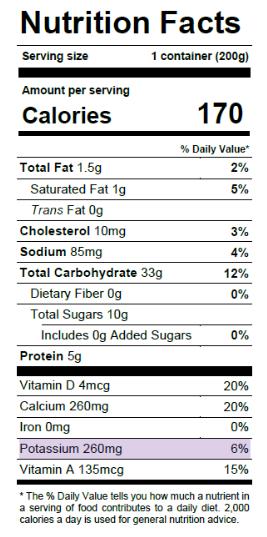
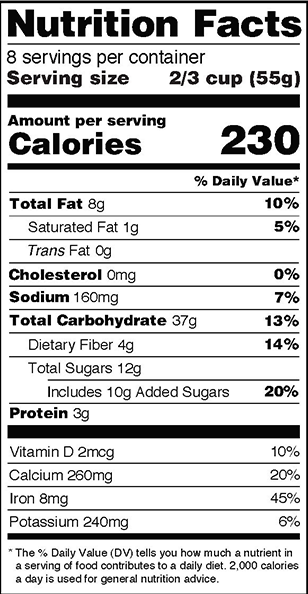

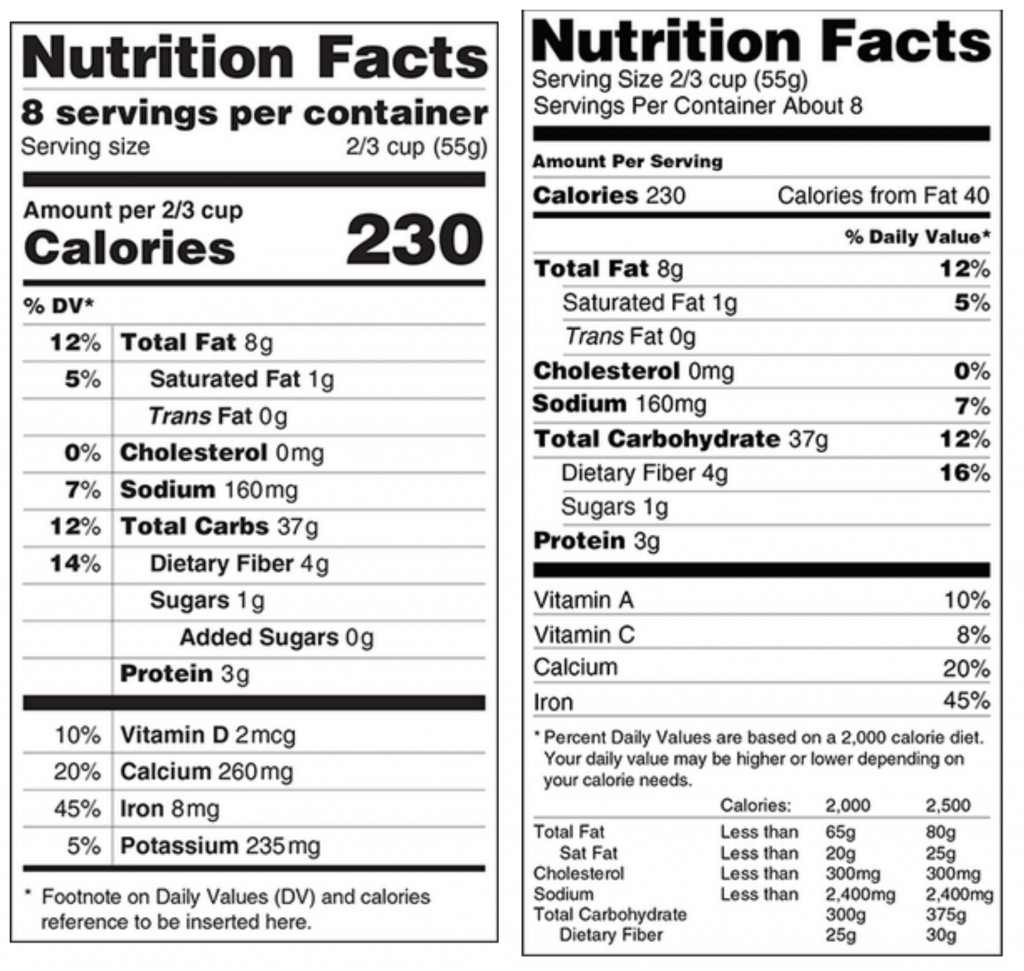

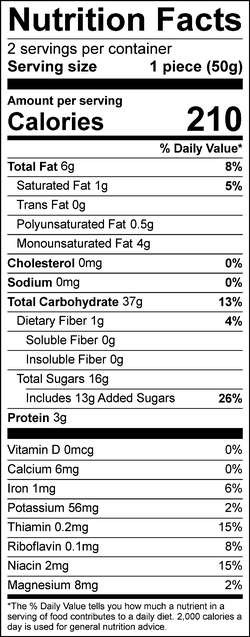


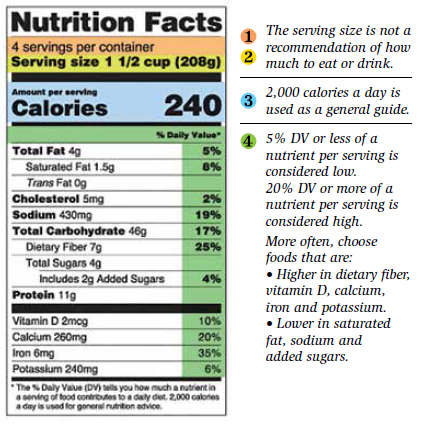




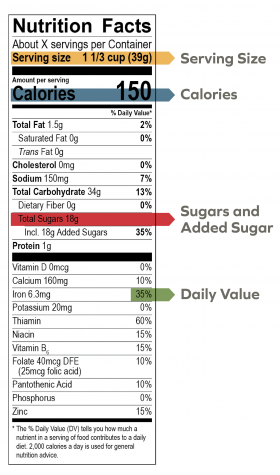
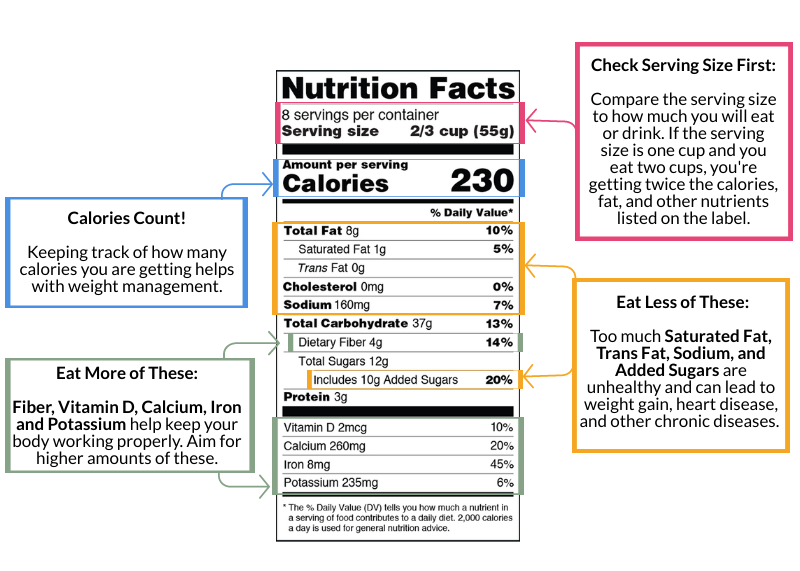
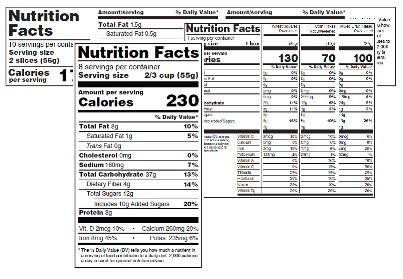

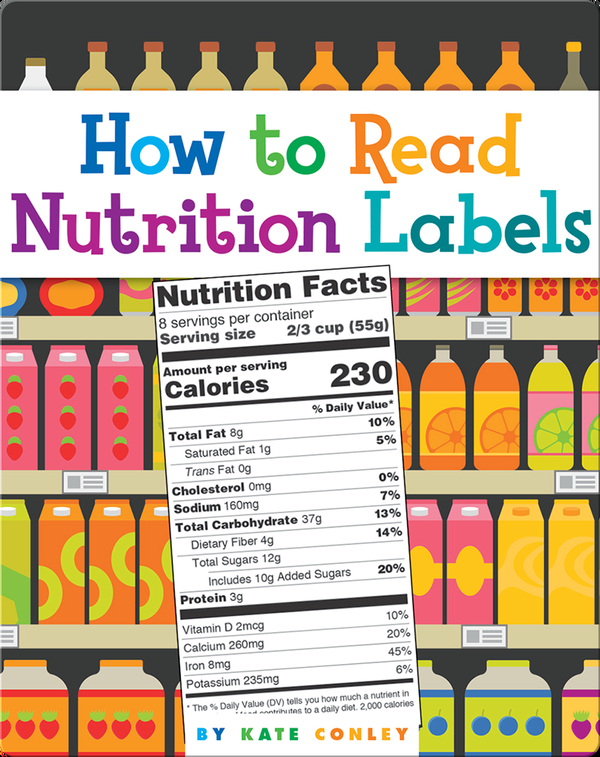





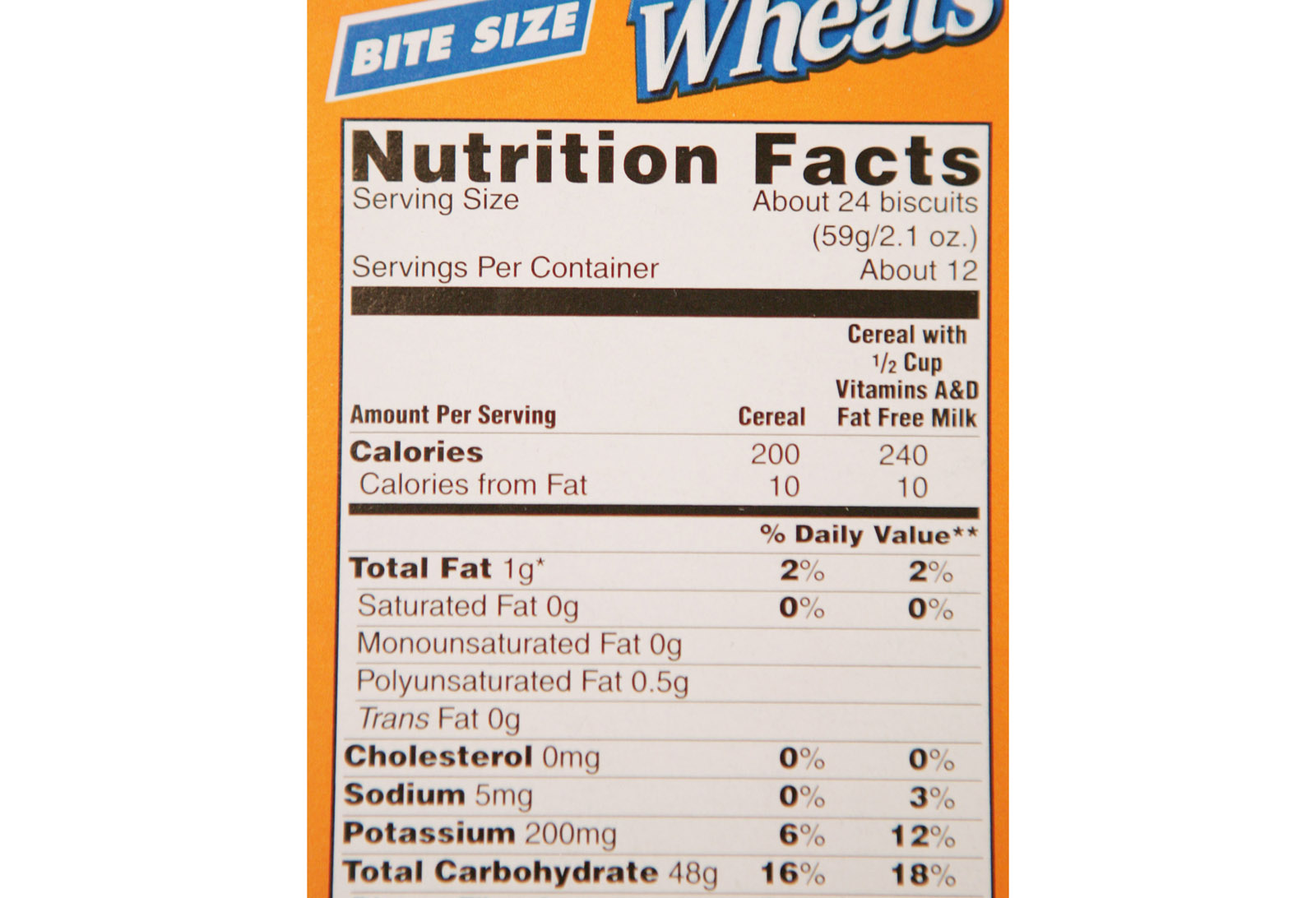


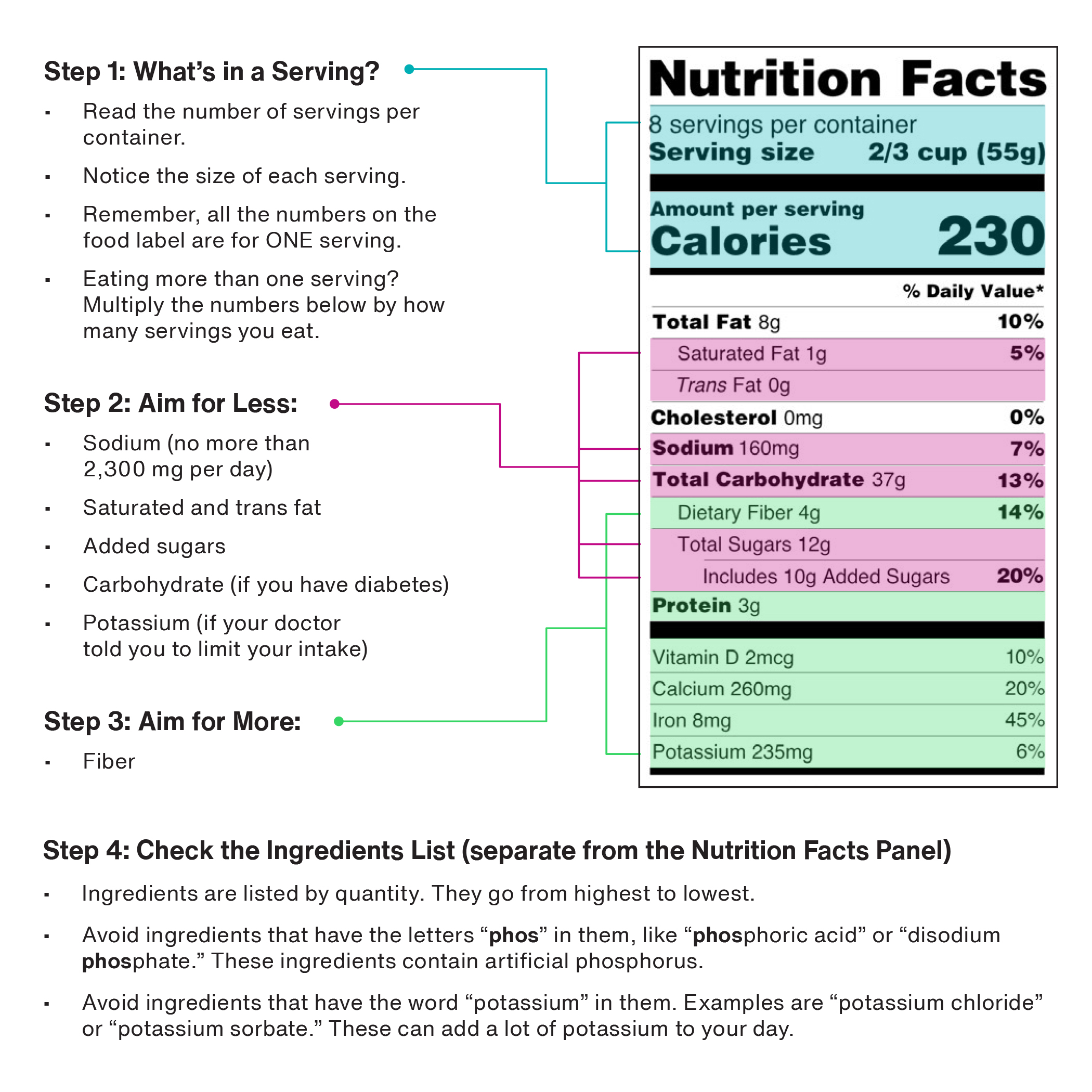
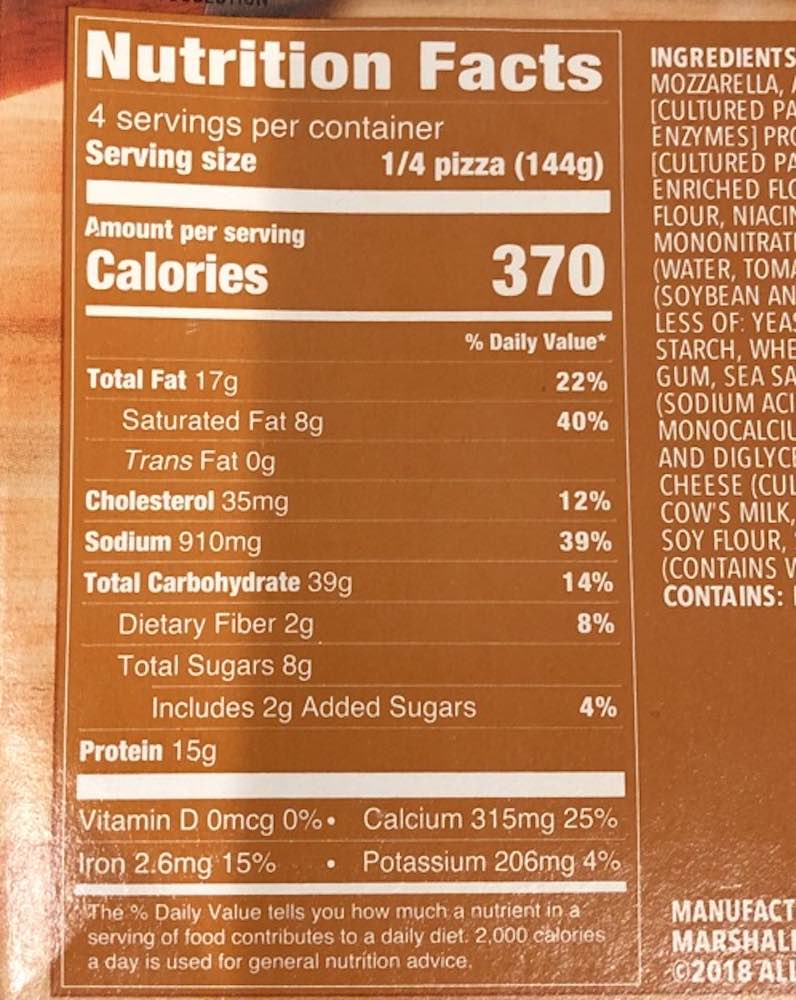
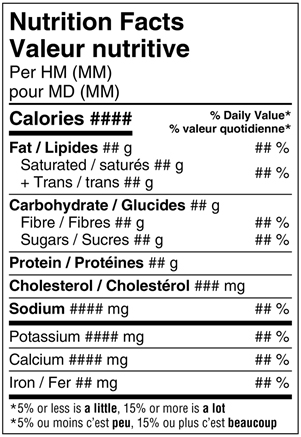


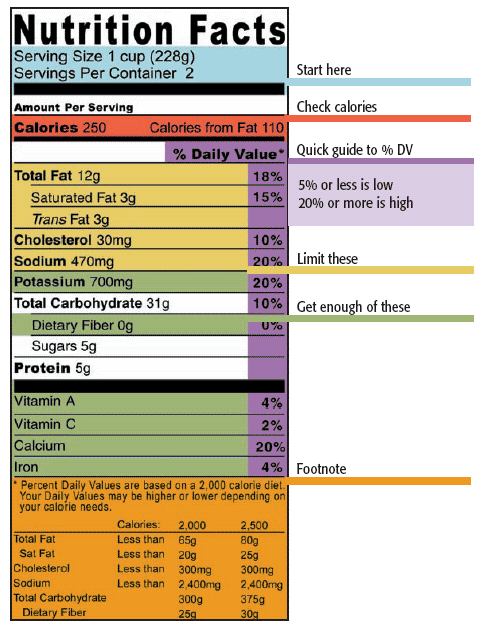
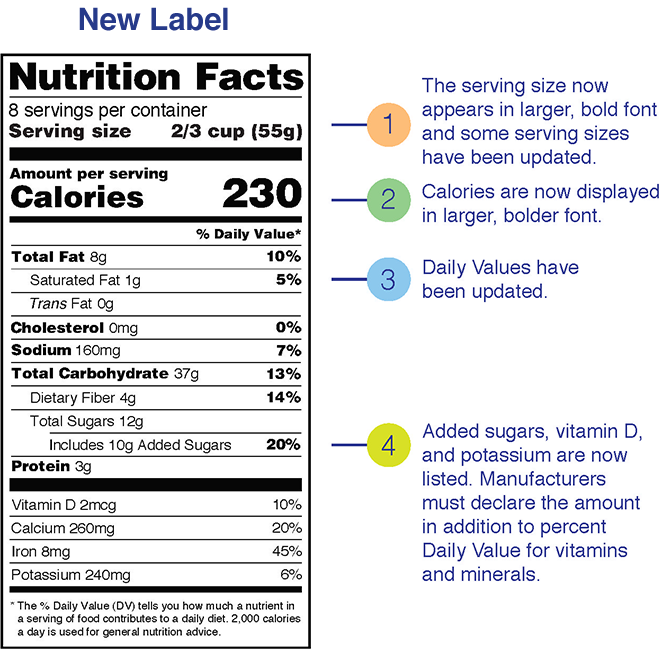

![The FDA's Updated Nutrition Facts Label [Infographic]](https://www.repsly.com/hubfs/Infographics/How%20to%20design%20the%20perfect%20packaging.png)
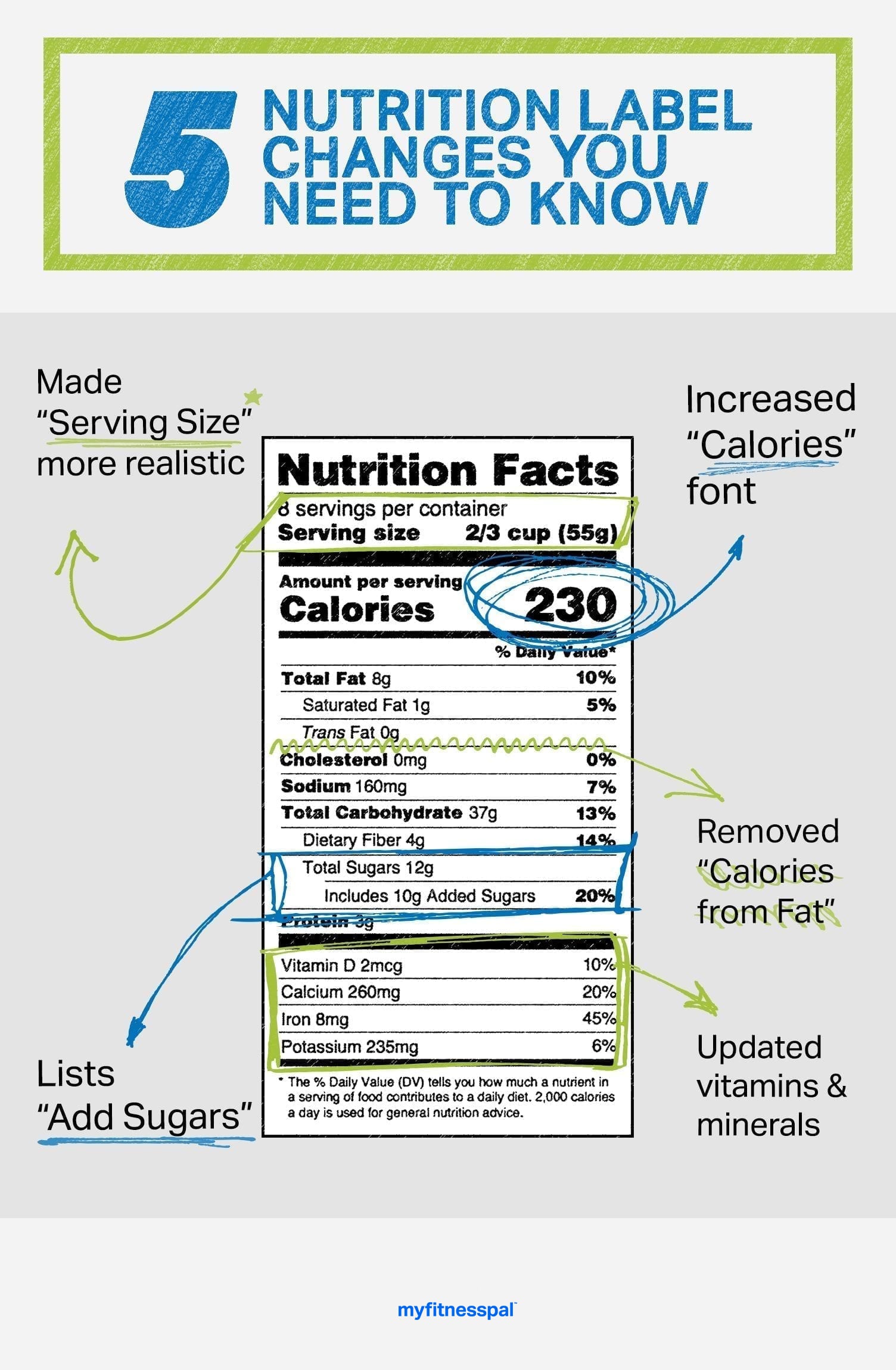


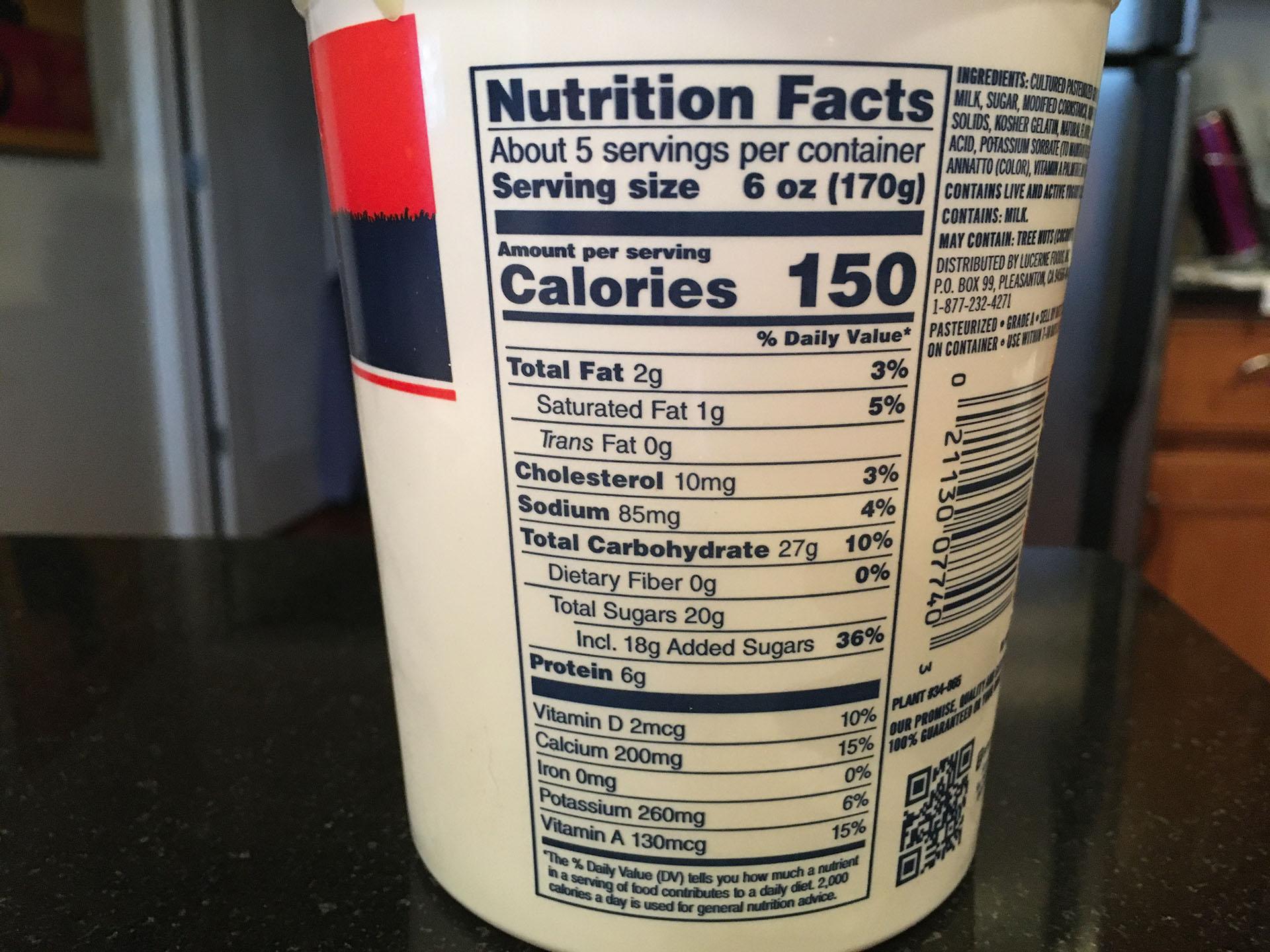
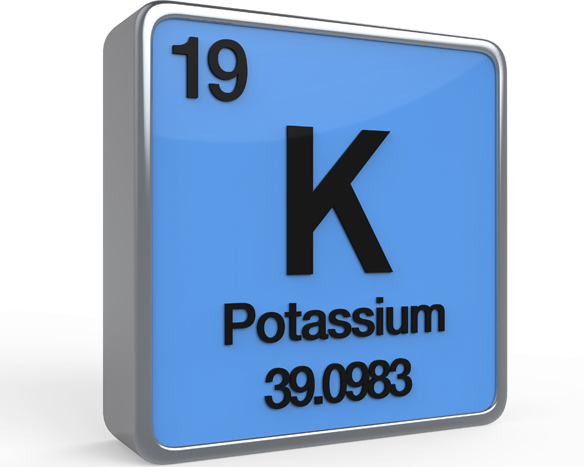
Post a Comment for "45 is potassium required on nutrition labels"